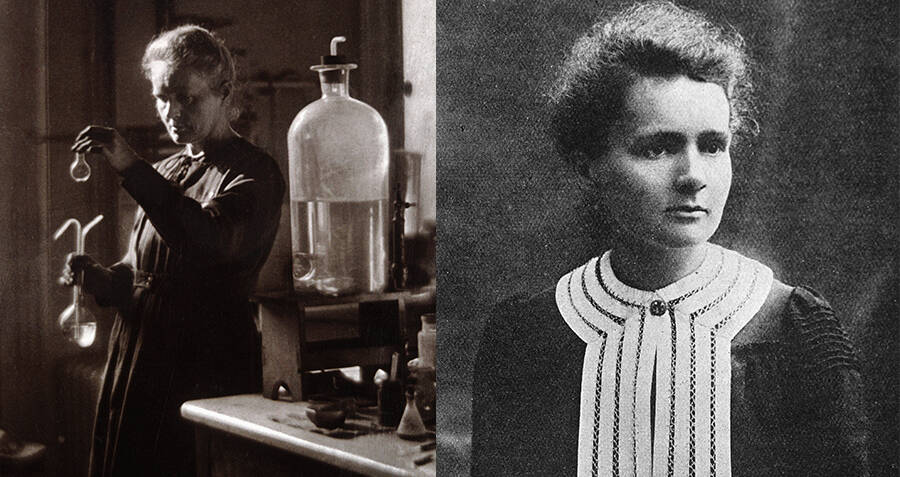
Who is Marie Curie? What are they interests and Hobbies, Education, Family and Childhood
Marie Curie was a Polish-born French Physicist. She was won the Nobel Prize Physics and another in Chemistry. She was the first woman ever to win a Nobel Prize in any field. Curie was famous for her work.
Marie curie’s birth name was Maria Sklodowska. She was born on November 7, 1867, in Warsaw, Poland and Bronislawa and Wladyslaw Sklodowski. Both her parents were teachers. Because of her father, Marie developed an interest in mathematics and physics. She was a bright student and had learned to read and write at a very early age. For her education, she went to J. Sikorska and graduated in 1883 with gold medal.
Marie decided to continue her studies. But in the 1800s, it was uncommon for young women in Poland to attend a university. So, she attended the underground educational establishment known as ‘Flying University’.
Marie paid for her sister’s college tuition, while putting her own dreams on hold. In her free time, she educated herself by reading books. She used to do practical training at the chemical laboratory.
Attend Sorbonne University, and Went to Paris Met Wilhelm Roentgen and Henri Becquerel
In 1891, she finally attended the Sorbonne University. During this time, she came to be identified as Marie. In 1893, she received her master’s degree in physics. And the next years, in mathematics. She soon began her scientific career and studied the different types of steel and their magnetic qualities.
Later, she returned to Paris and pursued her PhD degree. Marie then met scientists Wilhelm Roentgen and Henri Becquerel with whom she worked for many years. She was interested in the rays that were discovered by these scientists. Roentgen had found X-rays and Becquerel had discovered uranium salts. Marie began to conduct experiments and wok a little further on these discoveries.
Deal with Pierre Curie and Discovery of Radiation
She used two uranium minerals called pitchblende and torbernite. Around 1898, Marie started to work with Pierre Curie. They researched to discover additional substances that emitted radiation. But one day, Marie saw something unusual in the pitchblende material. She had assumed there would be few rays emitted from the uranium in the pitchblende. Instead, Marie noticed a lot of rays. She realized that there was a new, undiscovered element within pitchblende.
Spent Many Hours in Lab, and Investigate New Elements
Marie was amazed at this discovery. She spent endless hours in the science lab with Pierre Curie to investigate pitchblende and the new element. They ultimately concluded that were two new elements in pitchblende.
These were two new additions to the periodic table. In 1898, a new element, which was also radioactive, was discovered. Marie named it ‘Polonium’, after her homeland, Poland. The dame year, another element was named ‘radium’ as it emitted strong rays. The tern ‘radioactivity’ was coined by Marie Curie, which described elements that emitted strong rays.
Nobel Prize in Physics, Achievements with Marie and Pierre Curie
Later, the two scientists were able to retrieve polonium and radium in their pure forms from the material pitchblende. In 1902, they finally separated radium salt. For the next years, Marie published many scientific papers about her work on radioactivity.
In 1903, the Nobel Prize in Physics was awarded to Marie and Pierre Curie, as well as Becquerel for their work in radiation. Marie easy at the height of her career. She received a doctorate from the University of Paris. And in 1911, Marie was awarded the Nobel Prize in Chemistry for the two elements. She became the first person to have won two Nobel Prizes.
What are the role of Marie in During World War I
Marie also played a significant part during World War I. Marie discovered that X-rays could help doctors determine what was wrong with a wounded soldier. She even came up with the concept of X-ray machine and trained people to rum then. She installed many mobile radiological vehicles and units on the field. After the war, she wrote a book named Radiology in War.
Love life and Death
Marie married Pierre Curie on July 26, 1895. The couple had two daughters. They worked on major experiments that changed the World of science together. Marie died on July 4, 1934, after she suffered from aplastic anemia due to continued exposure to radiation.
Conclusion
Today, lots of safety measures are followed by scientists to avoid getting overexposed to the rays. As a tribute to Curie, many buildings, universities, roads and museums were named after her.
